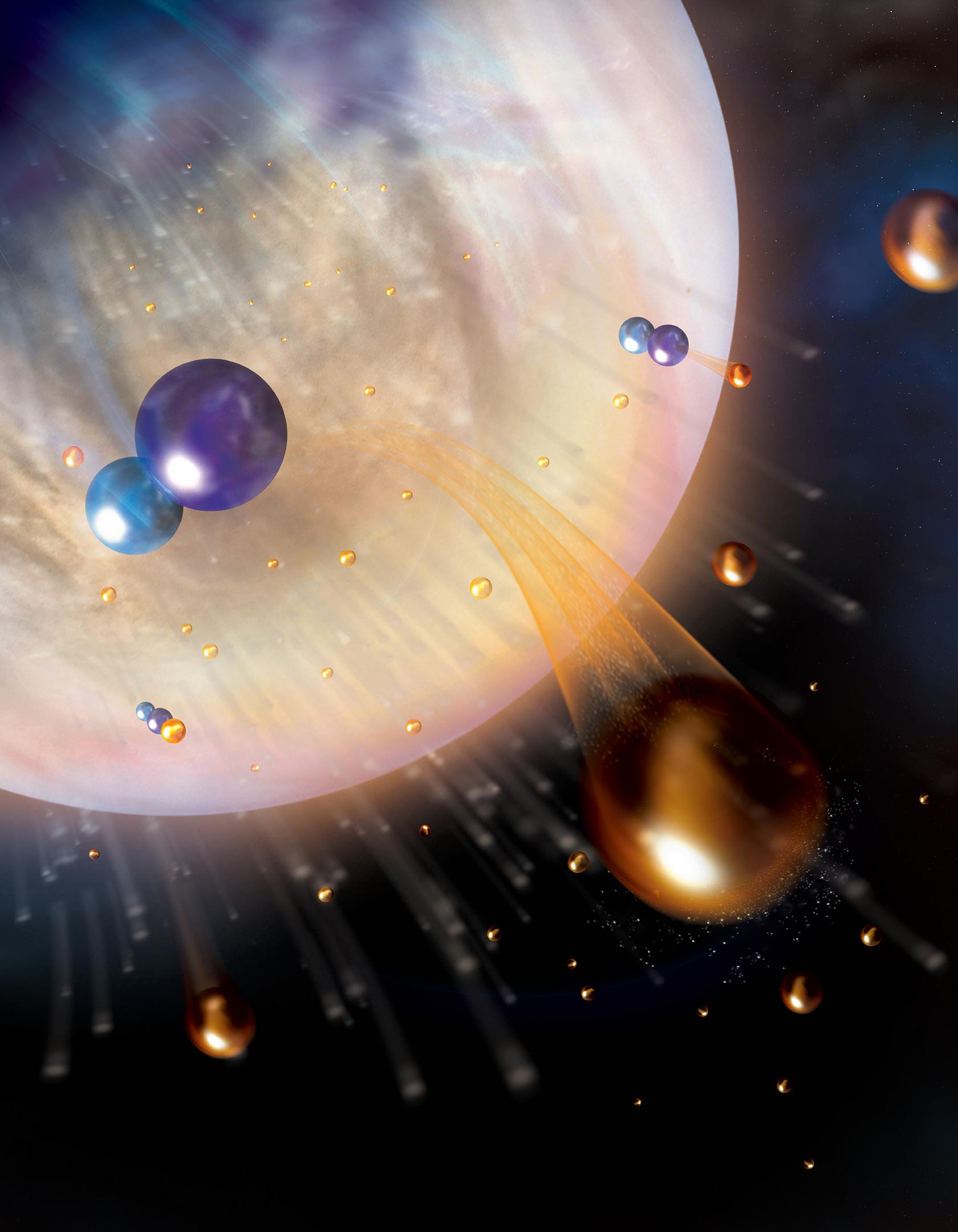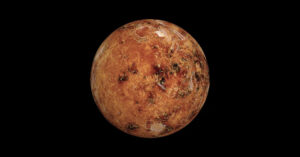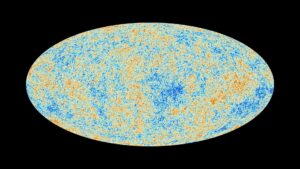Venus is dry today thanks to the loss of water to space as atomic hydrogen. In the dominant loss process, an HCO+ ion recombines with an electron, producing fast H atoms (orange) that use CO molecules (blue) as an escape launch pad. Credit: Aurore Simonnet / Laboratory for Atmospheric and Space Physics / University of Colorado Boulder
Researchers have found that Venus is losing significantly more water than previously thought due to a process called “dissociative recombination” in which hydrogen atoms escape into space.
Planetary scientists at the University of Colorado Boulder have discovered how Venus, Earth’s scorching and uninhabitable neighbor, got so dry.
The new study fills a major gap in what the researchers call the “water history of Venus.” Using computer simulations, the team found that hydrogen atoms in the planet’s atmosphere are blown into space through a process known as “dissociative recombination” – causing Venus to lose roughly twice as much water each day compared to previous estimates.
The team published their findings May 6 in the journal Nature.
The results could help explain what happens to water on multiple planets throughout the galaxy.
“Water is really important to life,” said Erin Kangy, a researcher at the Laboratory for Atmospheric and Space Physics (LASP) and co-author of the new paper. “We need to understand the conditions that sustain liquid water in the universe, and that may have led to the very dry state of Venus today.”
Venus, she added, was positively parched. If you took all the water on Earth and spread it over the planet like jam on toast, you’d get a liquid layer about 3 kilometers (1.9 miles) deep. If you did the same thing on Venus, where all the water is trapped in the air, you’d end up with just 3 centimeters (1.2 inches), barely enough to wet your toes.
“Venus has 100,000 times less water than Earth, even though it’s essentially the same size and mass,” said Michael Chaffin, co-author of the study and a researcher at LASP.
In the current study, the researchers used computer models to understand Venus as a giant chemical laboratory, zooming in on the diverse reactions that take place in the planet’s swirling atmosphere. The group reported that a molecule called HCO+ (an ion composed of one atom each of hydrogen, carbon, and oxygen) high in Venus’s atmosphere may be the culprit for water leaking from the planet.
For Kangy, a co-author of the study, the findings reveal new clues about why Venus, which probably once looked almost identical to Earth, is almost unrecognizable today.
“We’re trying to understand what small changes occurred on each planet to bring them to these wildly different states,” said Kangy, who earned her doctorate in astrophysical and planetary sciences at CU Boulder in 2023.
Spilling the water
Venus, she noted, had not always been such a desert.
Scientists suspect that billions of years ago during the formation of Venus, the planet received about as much water as Earth. At one point, an accident happened. Clouds of carbon dioxide in the atmosphere of Venus caused the most powerful greenhouse effect in the Solar System, eventually raising surface temperatures to 900 degrees Fahrenheit. In the process, all the water on Venus evaporated into steam and most of it drifted into space.
But this ancient evaporation cannot explain why Venus is as dry as it is today, or how it continues to lose water to space.
“As an analogy, say I threw away the water in my bottle. There will still be a few droplets left,” Chaffin said.
On Venus, however, almost all remaining drops also disappeared. The culprit, according to the new work, is the elusive HCO+.
Missions to Venus
Chaffin and Kangy explained that in planetary upper atmospheres, water mixes with carbon dioxide to form this molecule. In previous studies, researchers reported that HCO+ may be responsible for Mars losing much of its water.
Here’s how it works on Venus: HCO+ is constantly produced in the atmosphere, but the individual ions don’t survive long. Electrons in the atmosphere find these ions and recombine to split the ions in two. In this process, the hydrogen atoms drift apart and may even escape into space altogether—robbing Venus of one of its two water components.
In the new study, the group calculates that the only way to explain Venus’ dry state is if the planet contains larger-than-expected volumes of HCO+ in its atmosphere. There is one twist to the team’s findings. Scientists have never observed HCO+ around Venus. Chaffin and Kangy suggest it’s because they never had the tools to make it look right.
While dozens of missions have visited Mars in recent decades, far fewer spacecraft have traveled to the second planet after the sun. No one carried instruments capable of detecting the HCO+ powering the team’s newly discovered escape route.
“One of the surprising conclusions from this work is that HCO+ should actually be among the most abundant ions in the Venusian atmosphere,” Chaffin said.
In recent years, however, more and more scientists have turned their gaze to Venus. NASAThe planned Deep Atmosphere Venus Noble Gas Exploration, Chemistry and Imaging (DAVINCI) mission, for example, will launch a probe through the planet’s atmosphere all the way to the surface. It is scheduled to launch by the end of the decade.
DAVINCI also won’t be able to detect HCO+, but researchers hope a future mission could reveal another key part of Venus’ water story.
“There haven’t been many missions to Venus,” Kangi said. “But the newly planned missions will use decades of collective experience and a burgeoning interest in Venus to probe the extremes of planetary atmospheres, evolution and habitability.”
Reference: “Water loss on Venus is dominated by HCO+ dissociative recombination” by MS Chaffin, EM Cangi, BS Gregory, RV Yelle, J. Deighan, RD Elliott, and H. Gröller, 6 May 2024. Nature.
DOI: 10.1038/s41586-024-07261-y



